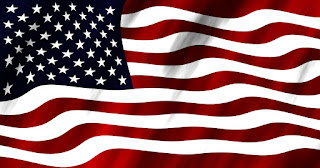Newsweek reported that protesters are demanding Twitter's CEO to step down if he is unable to remove US President Donald Trump from Twitter. The protesters have launched a campaign "@Jack is complicit" to highlight the role Twitter has played in promoting Donald Trump.
(See the @realDonaldTrump tweet that sparked off the recent outrage)
All the hype about Twitter doesn't seem to be relevant at all. Twitter has been around for almost 10 years now and is one of the oldest social networking sites. In the last decade the site has been able to add and maintain only 330 million monthly active users when reported last and the company has never revealed the number of daily active users worldwide but is believed to be less than half of it's monthly active users. Compare this to the number of internet users worldwide, which is 3.8 billion, nearly half of the world's population! If we look at the top 3 countries of internet users - China has 750 million, India has 460 million and United States has nearly 300 million connected to the internet.
What is apparent is that the number of Twitter users among internet users worldwide are minuscule. More than 100 million internet users in India are not on Twitter at all.
If we take a moment to stop and distance ourselves from the social media frenzy, we may notice that Twitter may not be relevant to a vast number of audiences, simply because they are not there (and are not following tweets from Donald Trump).
But Twitter is a big deal! Twitter's merit as a platform for breaking news is well established. It is also the broadcast tool of choice for the high and the mighty. It is also great to establish direct contact with influential people. And, the media loves it. It gives journalists direct access to sources and their commentaries. Twitter derives its influence precisely from this, the fact that it manages to get media amplification for activities on the platform. The current trend of news media reporting on Twitter reactions, Twitter feeds, is what keeps the platform going. It's unfortunate that precious media space gets used up in such a manner, pushing issues of the day out of the public discourse.
It would be interesting to see if media decides to ignore Twitter updates of important people and what that would do to Twitter's business. The media should also stop obsessing about Donald Trump's tweets as he operates within a highly evolved democratic framework of institutions with robust checks and balances. It should recognize when it gets played.
(See the @realDonaldTrump tweet that sparked off the recent outrage)
All the hype about Twitter doesn't seem to be relevant at all. Twitter has been around for almost 10 years now and is one of the oldest social networking sites. In the last decade the site has been able to add and maintain only 330 million monthly active users when reported last and the company has never revealed the number of daily active users worldwide but is believed to be less than half of it's monthly active users. Compare this to the number of internet users worldwide, which is 3.8 billion, nearly half of the world's population! If we look at the top 3 countries of internet users - China has 750 million, India has 460 million and United States has nearly 300 million connected to the internet.
What is apparent is that the number of Twitter users among internet users worldwide are minuscule. More than 100 million internet users in India are not on Twitter at all.
If we take a moment to stop and distance ourselves from the social media frenzy, we may notice that Twitter may not be relevant to a vast number of audiences, simply because they are not there (and are not following tweets from Donald Trump).
But Twitter is a big deal! Twitter's merit as a platform for breaking news is well established. It is also the broadcast tool of choice for the high and the mighty. It is also great to establish direct contact with influential people. And, the media loves it. It gives journalists direct access to sources and their commentaries. Twitter derives its influence precisely from this, the fact that it manages to get media amplification for activities on the platform. The current trend of news media reporting on Twitter reactions, Twitter feeds, is what keeps the platform going. It's unfortunate that precious media space gets used up in such a manner, pushing issues of the day out of the public discourse.
It would be interesting to see if media decides to ignore Twitter updates of important people and what that would do to Twitter's business. The media should also stop obsessing about Donald Trump's tweets as he operates within a highly evolved democratic framework of institutions with robust checks and balances. It should recognize when it gets played.








.bmp)